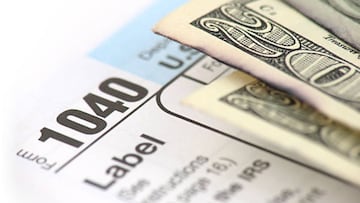These are the most common mistakes made when filing tax returns
If you don’t want your refund delayed, learn what the most common mistakes are when submitting your return to the IRS and how to avoid them.

in 2024, starting 29 January the Internal Revenue Service (IRS) began receiving and processing the tax returns of millions of taxpayers. According to estimates from the government agency, more than 128.7 million taxpayers are expected to file their 2023 income tax return before the deadline on 15 April for most taxpayers.
Given that carrying out the procedure can mean a tedious process for taxpayers, the IRS has some electronic tools to facilitate tax filing, which are public and free of charge. Among them are Direct File and Free File, both are also available in Spanish for Hispanic taxpayers.
Although submitting the return electronically guarantees greater accuracy in the data, having the correct information from the beginning could help you avoid issues from the e-file system and, therefore, prevent delays in tax processing and receipt of a refund. For this reason, the government agency has a list of the most common errors when carrying out the procedure.
DYK what documentation you need to file an accurate and complete return? #IRS has all the information you need to help you avoid errors and omissions. Visit: https://t.co/euXvWvFRwU pic.twitter.com/aw1OjfkrI5
— IRSnews (@IRSnews) February 24, 2024
These are the most common mistakes made when filing taxes
It is the duty of each taxpayer to check that the information in the return is complete and correct, even if it was prepared by an external party, that is, if an agency was hired to help with filling out the documentation. Below are the most common errors when filing the return both online and on paper, according to the IRS list.
- Failure to correctly write personal information, such as the taxpayer's name, taxpayer identification number, Social Security, and current address
- Mark an erroneous filing status
- Entering incorrect information about dependents, especially when applying for credit
- Write down income on lines that are not correct
- Do not attach income forms
- Not calculating deductions and credits correctly
- Do not put negative quantities in parentheses
- Check the wrong boxes when claiming the standard deduction
- Not knowing how much the standard deduction is
- Not calculating taxes correctly
- Do not sign or date the declaration, either individually or together
- Do not combine wage and tax withholding amounts if you have more than one job
- Do not attach forms showing federal tax withholding
- Do not attach all annexes and forms in the sequence order that appears in the upper right corner
- Do not include checks or money orders payable to the US Treasury if you owe taxes or do not fill out said checks or money orders correctly
- Do not write the account or bank transfer number correctly if you expect the refund in direct deposit
- Failure to make a copy of the signed and dated declaration and all annexes and attached documents
You may also be interested in: Do you have to report an inheritance on your tax return?
Related stories
Personal tax returns are filed using Form 1040, however, if you have made a mistake filling in your tax return, or have changed address, you will have to file an amended form before the tax deadline. You will need to fill out another, two-page document: Form 1040-X.
For more information, visit the official IRS website or check the IRS list of FAQs. If you need personalized attention, you can go to one of the Taxpayer Assistance Centers (TACs), depending on your location.


Complete your personal details to comment